
On the stormy night of September 1st 1785 the Faithful Steward, having journeyed 53 days from Londonderry Ireland en route to Philadelphia, ran aground during an intense squall near Delaware’s Indian River Inlet. On board were 249 immigrants, Captain Connolly McCausland, a first and second mate, 10 crew members, and 400 barrels of half pennies and gold-rose guineas.
Having been blown off course, and surprised at the predicament the crew found themselves in, a sounding was taken. To their amazement, the ship was only in 4 fathoms of water, yet there was not the slightest hint of land within sight of the ship. To no avail, the crew attempted to free the 350 ton, 150 foot-long ship.

The following morning, at daylight, the ship was reckoned to be about 4 leagues south of Cape Henlopen near the Indian River, and about 100 yards from the Delaware shore. That evening the ill-fated ship broke into pieces. Long boats were launched to carry the passengers to shore, but drifted away before they could be manned. The passengers found themselves marooned aboard the ship, without the longboats to save them. Their only choice was to swim ashore, or use pieces of the broken ship as makeshift rafts.
By the morning of September 3rd at daybreak, 181 of the passengers had perished, including all but 7 women and children. Washed upon the shorelines were the bodies of the dead, whose bodies were later plundered of valuables by the inhabitants of the local town.

Ever since the wreck, whenever a strong Northeaster passes through the vicinity, coins from those 400 barrels wash upon the shore. Earning the nickname “Coin Beach,” over the last 225 years thousands and thousands of coins have been discovered by beachcombers, treasure hunters, and children. Most coins discovered have been counterfeit British and Irish half pennies; a vast many being evasions. Occasionally someone lucky will come along and find a golden guinea.
In the 1980s a local of Northern Virginia would make excursions to Delaware’s Coin Beach.

Armed only with the weather report, Bob King would drive the 2 hour trip and await the passage of storms.
Minutes after the storms would pass, Bob would comb along the beach, picking up his bounties off the storm-shifted sands.
Recently the two of us got together to discuss numismatics; Bob has been collecting coins and metal detecting artifacts for over a half-century. It was during this particular conversation that he told me about his adventures troving the tides at Coin Beach.
For years I’ve heard stories about the famous beach, but inevitably when the storytellers were pressed, it always ended-up that the story was secondhand. The finders were always someone’s uncle, someone’s next door neighbor, or the like.
Bob loaned me several of his Coin Beach finds to evaluate, photograph, and where possible, identify. There are 10 specimens, and the following is a census of those specimens†:
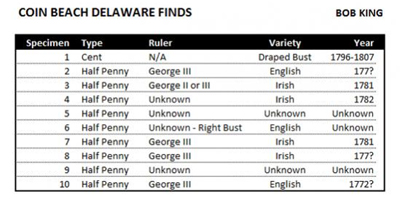
Numismatic Specimens
Pictured below are the finds and diagnostics†. All have approximate diameters between 25.5 – 28mm. Though each specimen was weighed, their respective weights were irrelevant. All fell within tolerances of coppers, and beyond that, could not provide any additional insight as to whether each was a counterfeit, an evasion, or Regal:










Sometime after the 1980s the area where the wreck of the Faithful Steward sank was dredged. Subsequent reports indicate that specimens are found less frequently now.
Aaron Packard ![]()
Notes and Sources
† It can only be assumed, based on the date of the wreck of the Faithful Steward, that the large cent found did not originate from the ship.
- Bob King, Detectorist & Numismatist, Alexandria Virginia
- The Numismatist, Volume 104, ©1991
- The Daily Universal Register of London, Tuesday, November 22, 1785
- The Daily Universal Register of London, Thursday, November 24, 1785
- In Search of the Faithful Steward, Bob Elmwood
- Ship Faithful Steward, Londderry to Rhode island, Irish Emigration Database
- Whitman Encyclopedia of Colonial and Early American Coins, Q. David Bowers, Whitman Publishing, ©2008
- A Journey Through the Monkalokian Rain Forests In Search of the Spiney Fubbaduck, Malachy Greensword, ©1993
- Coins of England and the United Kingdom 43rd Edition, Spink, ©2007
- The Forgotten Coins of the North American Colonies, William T. Anton JR, Bruce P. Kesse, Woodcliff, ©1990
- Coins of Scotland, Ireland and the Islands, Spink, ©2002
- The Library of Congress Digital Archives
- New York’s Crystal Palace & The H.B. West Tokens - November 6, 2019
- Edward Aschermann’s Cigar & Tobacco Tokens - November 2, 2019
- George T. Hussey & His Special Message Tokens - October 30, 2019

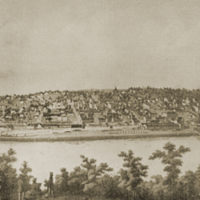
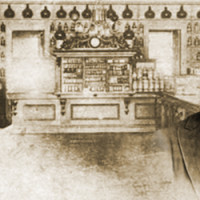
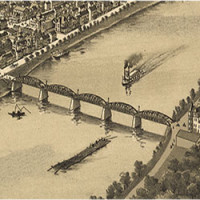
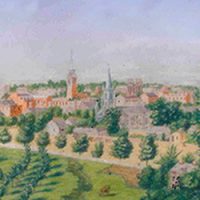
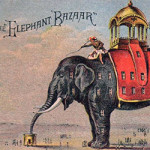
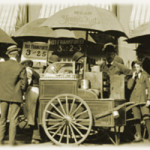
An encrusted object was just found Oct 21 2013 by Ernie from Pasadena MD.
I was detecting with my wife and son Andy. We took the encrusted object to the wonderful Discoversea Shipwreck Museum to show to Dale Clifton.
He took the encrustation back to his lab, cleaned it with a solution, and gave it his special touch.
Out popped a Steward coin, button, and lapel pin! Three total pieces, all from the Faithful Steward.
WOW! What a find!
Last year I also found a 1699 coin in Ocean City, believed to be a William III if my memory is correct. Dale Clifton, at the Discoversea Shipwreck Museum is a big inspiration, and I am grateful for his help.
Dale… We love your Museum on Fenwick Island.
Thanks for the story Ernie. It’s always terrific to hear that folks continue to find specimens from the ship!
Edward Cooke, (brother of Colonel William Cooke, 12th. Regiment Continental Line out of Northumberland Co., Pa.) was aboard that ship, the “Faithful” Steward along with his wife, and their 10 children. They were all lost. Edward had another brother in this country; he was Colonel Jacob Cooke out of Lancaster County.
Hi Charles –
Thanks for information. Based on your name, it sounds like you’re a direct ancestor. Awesome!
Aaron
Edward would my G-G-G-G-grand Uncle
Edward had two other brothers who fought on the side of the British, they were lieutenant Colonel Charles Cooke and Major Robert Cooke.
Hi Charles –
Thanks for sharing!
Aaron Packard
Thank you for telling the story. I heard only about coin beach and the coins coming from an unnamed shipwreck. It was a tragic wreck made worse by the townspeople who proceded to rob the dead that washed upon the beach. Must have been a town of awful people. Do you know what the town was called, Dewey maybe? Guess they figured those folks didn’t need their valuables any longer. Did those people ever get buried somewhere besides the dunes? Don’t recall ever hearing any tales of a shipwreck cemetery nearby. Now that I know just a little of the story, I am more curious than ever. Thanks again.
Hi Denise –
Dewey is a beach near Coin Beach. As to where they were buried, I wasn’t able to uncover that information in my research.
Thanks!
A.M. Packard
To whom it may concern
I am a direct decendant of one of the surviving passengers of the Faithful Steward, John M’Illheney(McIllheney) changed to McElhaney by John’s son William who’s had a son named John, who had a son named Clarence Albert, who had a son named Earl, who was my father, My name is Billy Ray McElhaney. I have two sons William Lance and Leslie Bryce. I have a brother named James Howard and he has two sons James Jr. and Jonathon. Phone 931-651-1288 e-mail bdmcelhaney@charter.net
Thanks for the information Billy Ray. It is greatly appreciated sir.
I also had Elliott & Lee relatives on that ship… some did survive… an Uncle later moved to Ohio.
Vera I am currently researching the Faithful Steward with intent to publish an article in Delaware Historical Society/s magazine. Would you be willing to discuss your ancestors on the Faithful Steward??
I would be happy to tell you what I know…:)
vera
Vera,
I, too, am seeking info on the survivors of FS.
William, who settled in Zanesville, Ohio, is the GGF of MY GGM , Elizabeth, Eleanore Elliott.. who was born in 1852 , in Duncan Falls, Muskingum County, Ohio.
She had an adventure- filled life and died in Johnson City , Mew York.. having been buried in the Riverhurst cemetery in 1925. I am looking for info on her first spouse, John or Benjamin McComb who was killed out in Colorado, leaving her with three very young children. Any info that you may have on her family of origin would be greatly appreciated by me.
blseace@gmail.com
610-692-6136
1105 Queen Drive
West Chester, Pa 19380
Thank you, Bonnie
Hi Vera, We have recently heard of this ship. Someone in our family believes that we are related to the Elliott/Lee line too. Can I contact you? Sue (daughter of Mary Elliott)
On July 15th 2014 my wife and I visited coin beach to play with my 40 year old Bounty Hunter detector.
Entering the beach from the Savage ditch crossing, I proceeded north for about one hundred yards and then returned back to my wife at the starting point.
After 1 hour of nothing I turned south towards the inlet. My first sound was a bottle cap. 20 feet more, a flip top lid. At least I knew the old relic was still working. Just 5 more steps and I had a constant beep.
Digging down only 8 inches I found my treasure. A small piece of copper plating with the number 10 stamped onto it. We went to see Dale Clifton who identified my find as a piece of copper sheeting from the hull of the Faith Steward!
My vacation was complete after Dale confirmed my find. Then he opened his vault to show us 2 gold ingots that were valued at 1/2 million dollars.
Coin beach still produces treasures.
Good Luck!
Terrific story Bradley! Congrats on your find! Thanks for sharing. Much appreciated!
Hello. I also descend from a survivor of The Faithful Steward, James Stunkard. If coins from the wreck are not somehow protected legally, I would be interested in purchasing one.
Teresa
Teresa,
I have about 10 half penny’s from the Faithful Steward that I have found metal detecting at Coin Beach. If you would like to purchase one email me at n3tuf@comcast.net
Woody
just curious to know what you are or did sell your coins for?
Teresa I am currently researching the Faithful Steward for an article in the Delaware Historical Society magazine. I would love to talk to you about James Stunkard and what was his life story post shipwreck.
Mr. Cooke I am currently researching the Faithful Steward for the purposes of doing an article on it in Delaware Historical Society magazine. Would you be interested in talking about what documentation you have on your distant ancestor?
I am the great-great-great-great grandson of Jane Lee and Charles Elliott. Jane Elliott (Lee) was the grand-daughter of James Lee and Isabella Bascawen who perished on the wreck of Faithful Steward. Jane and Charles married in Ireland and I believe came to America before her grandparents. I would be willing to share information on following generations of the Lee/Elliott family if you are interested….
Dear Richard,
I am related I believe to the Elliotts and Lee’s …supposedly my Margaret was the sister of Simon & William who survived. My Thomas(Honest Tommy) Elliott m to Margaret would I assume have been on that ship also except she was supposedly pregnant. They came later.
Thanks,
Vera
Dear Richard,
I am the great, great , great granddaughter of Samuel Lee born 1775 in Ireland and strangely lived and married in Delaware. Our family feels that he might have been one of the children that survived the wreck of the Faithful Steward. We do not know who his father was.
He moved to Harrison County, (W) VA after the birth of his son Samuel in 1817. His wife was Elizabeth McCabe of Wilmington, DE, They raised a large family and spent the rest of their lives in the same area.
I feel so sad every time I read of the Lee family losing most of their family due to a “pilot error”.
If you can help solve this program I would be eternally grateful.
Thank you Helen Sells
Hi. I am also a 4G Grandson of Charles Elliott and Jane Lee through my Grandmother Ada Elliott Osborn. I have info on the Elliott line from Charles down to my Grandmother and happy to share. Do you have any additional info on Charles’ parents or earlier? I am at deosborn.solar@gmail.com.
Enjoy
Just discovered by Ernie Dimler,Sandy Dimler,Andy Dimler Oct 22 2017,We found another encrusted piece on coin beach, it was taken to Discover Sea Ship Wreck museum in Fenwick Is Delaware ,Dale is so Amazing,The treasure displays at the Discover Sea shipwreck Museum is also Amazing, Inside the encrusted piece was a button and a King George III coin.These are commonly found on this site the button is very ornate.1780’s ,This is a most recent find on coin beach by family treasure hunters like us.We have found several coins and buttons over the years from the Faithful Stewerd Shipwreck of 1785
I have been seeing photos of finds in recent years of CB finds with some dismay yet fully glad I visited in 1993.
After a blow, I left Frederick, Md and hit Coin Beach at 7:00 AM. I immediately went 13 e!ectric poles past The inlet and found the beach berm moved back some meters at that point. Started searching with my Garrett Pulse 500 but stopped when I noticed some pillars of sand about 3 inches tall scattered up near the berm.
I noticed each of the 27 pillars held a half penny on top.
These were only lightly corroded without the salt pitting and with full Hibernia and Brittannias and George embossments. Further, each was dated clearly with dates from 1776 to 1783. 22 hibernias an 5 Brittannias.
As I was leaving, a fellow came over the berm down near where I was. We talked…he said he ran the Ocean City museum or Life Saving Station museum…cannot remember…but some years later learned that he had found a Rose Gold Guinea that day.
The reason the coins were on pillars? They were under the berm for most of the 200 years since wreck. The only real water they experienced was rain soaking in and covering the coins and causing leached ions of copper to run into the sand under them this forming a sort of conglomerate, with the coin lightly attached
atop. The storm waves washed away the loose sand leaving the pillars and pennies …FOR ME.
I sold them to members of my Maryland THing Club and
Lost the pictures in a house fire in 1995 in Frederick, Md.
Been back to CB 4 times from SC to search for guineas but have not found other than normal modern coin and junk. Truly one must live there to watch conditions and be ready to pounce to be successful anymore. Good Luck
Hi Clint –
Thanks for sharing your experience at Coin Beach. Indeed, when I interviewed the late Bob King that was exactly his guidance… pay close attention to conditions at all times.
Aaron Packard
I am the Grandson (not sure how many Greats) of Mr. M. His story was published in the early 1800’s, and I have an original copy from the news paper. There are some fascinating things missing from the above article.
Very detailed events of the captains party the night of the wreck, and few days after he made it to shore. The survivors were not treated kindly….
Detecting at Coin Beach, I found a very worn Irish half penny a few months ago. I ran into Michael Dougherty, author of “The Wreck of the Faithful Stewart on Delaware’s False Cape” while there, and he confirmed the half penny as real and likely from the FS. Last week, I found what I am fairly certain is a piece of copper hull sheathing. It is about four by two inches and has small holes for rivets on two edges. I would love to show it to someone who could tell me for sure if that’s what it is. I bought and read Dougherty’s book, and now I am hooked on the subject!